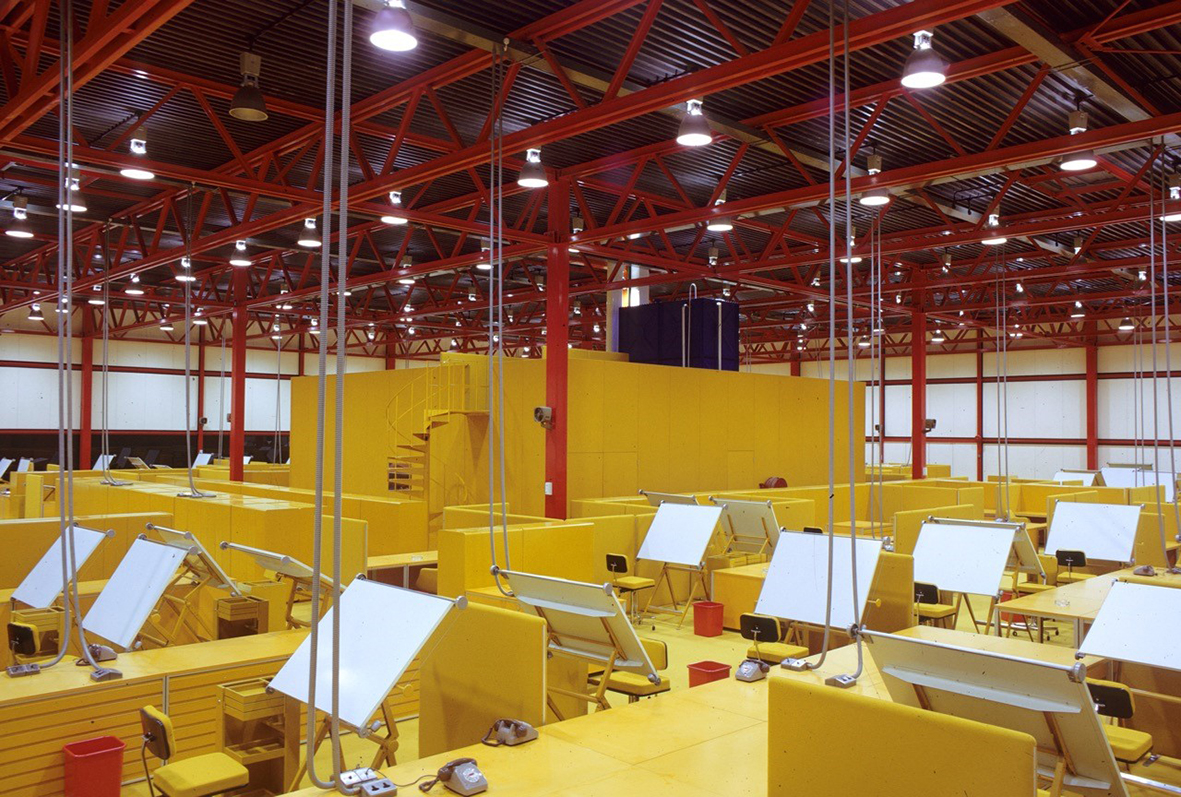The architect’s meandering texts capture the expressive potential of the physical world
Architect Tom Emerson’s droll, erudite collection of texts meanders through subjects not obviously signposted. A text the reader eventually determines to be about Johan Dehlin’s photography of five early projects by Frank Gehry doesn’t introduce Dehlin until many pages in, touching, in the leadup, on construction-site aphorisms, the freeway lane-hopping strategies of Joan Didion’s Maria in Play It As It Lays (1970), the cliché of yet another Brit (the author himself) falling foolishly in love with Los Angeles. Proper attention is then paid to Gehry, well observed if half-hidden in the textual scenery. Only then does he land on the photographer, briskly tying Dehlin into a history of the medium and drawing a line from Bernd and Hilla Becher’s Neue Sachlichkeit to LA’s Cool School. Dehlin, Emerson concludes, is ‘like a good jazz musician’, catching LA ‘marginally behind the beat’. A small portfolio of colour images follows.
The dozen texts included in Dirty Old River were all commissioned and published elsewhere, and their immediate subjects would likely be obvious when read in the contexts of their original publications: monographs, exhibition catalogues, art and architecture journals. But here they float free of a clear organising principle beyond, perhaps, that stated in the collection’s title, which is taken from The Kinks’ Waterloo Sunset (1967) and is a reference to the Thames. Its movement through landscape, especially the built landscape, is often overlooked (London can turn its back on the Thames in a way that seems shocking to, say, a visitor from Paris), and Emerson, in his convivial, drifting manner, is clearly sympathetic to the meanders and connections it furnishes across time and history, as well as the impossibility – not that you should stop trying! – of stepping into the same river twice.
What is also evident is that Emerson, a professor of architecture at ETH in Zürich as well as a practising architect in London (works by 6a, of which Emerson and his partner, Stephanie Macdonald, are founders, include a range of cultural institutions, galleries and studios), is a highly readable, literary-minded writer. These texts, written over three decades, display a keen sense of the touch and feel for architecture, its intellectual scaffolding, memory and the passage of time. The shortest piece here, which nonetheless manages to tie it all together, is titled ‘Blue’, in which Emerson describes a day at the very start of his career, when the architecture practice in which he is working has to turn out four sets of 100 line-drawings for contractors. ‘As the youngest in the office it is my job to fold, count and pile,’ he writes. ‘I like the strong smell of ammonia. It feels professional. This is architecture.’ He describes in brief the essential but transitory nature of these chemically unstable creations, initially blue, then yellow, later obscure, and what happens over the course of a day of folding: ‘Friction soon turns to light abrasion, but the lightheadedness from ammonia eases the task. The blueprint is smell and touch more than it is colour.’ Yet this story is not (only) about a young architect’s apprenticeship; the kicker comes in its final lines: the office gets its first CAD station later that summer, and dyelines take the offramp into history.
Plans literal and metaphorical, and the concerns of how to perceive, represent and communicate the world to oneself and others, underpin the collection. One text analyses the artist Monika Sosnowska’s steel sculptures violently scaled up from small torn and cut pieces of paper; another focuses on the architect Álvaro Siza’s working drawings as an ongoing conversation with builders and craftsmen. But the heart of this collection, placed at its physical centre, is a long, unillustrated (most of the texts here are sparsely accompanied by black-and-white images) text on Georges Perec, whose work addressed ‘the passing of time and its effect on space, memory and writing’. His work, and Emerson’s return to Perec over time (even as he classifies his own early writings on the French novelist as ‘rather naive’), unifies this collection temporally, conceptually and spiritually.
Dirty Old River by Tom Emerson. Park Books, £22 (softcover)
From the Summer 2025 issue of ArtReview – get your copy.
